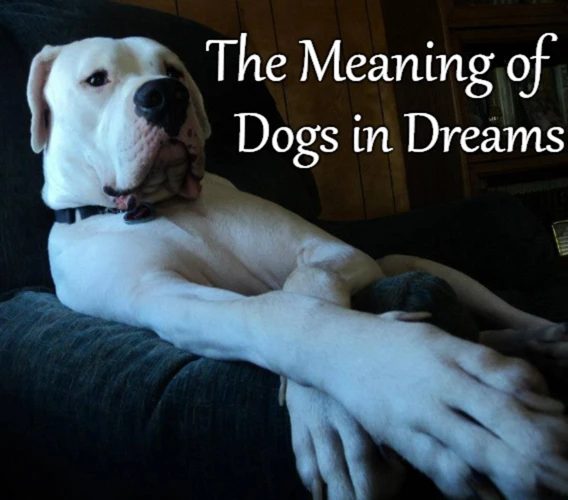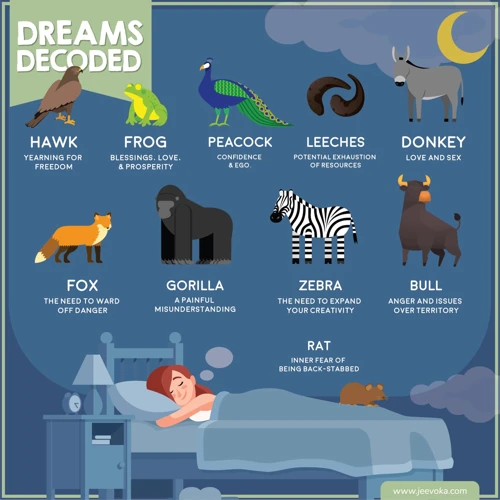Curiosity has long surrounded the sleeping habits of our beloved furry friends. We’ve all seen it – the twitching paws, the muffled barks, the gentle wag of a sleeping dog’s tail. It’s a mesmerizing sight that leaves us wondering: what do dogs dream about? What secrets lie within their slumbering minds? Unveiling the Mystery: What Dogs Dream About takes a closer look at the fascinating world of canine dreams. Join us on a journey as we explore the science behind dog dreams, decode their movements and vocalizations, and uncover the factors that influence their dreamscapes. Get ready to venture into the depths of your dog’s imagination and unlock the enigma of their dreams.
Understanding Canine Dreams

What happens in a dog’s mind when they drift off to sleep? Understanding canine dreams is a fascinating journey into their subconscious world. Scientists have discovered that dogs, like humans, experience REM (Rapid Eye Movement) sleep, which is associated with dreaming. During this stage, their brains show similar patterns of activity as when they are awake, indicating that they are engaged in vivid dream experiences. Dogs often exhibit physical responses while dreaming, such as twitching, paddling their paws, or even vocalizing softly. These actions suggest that they are actively experiencing something in their dreams, though the exact content remains a mystery. To unravel the secrets of canine dreams, we need to delve deeper into the science behind dog dreams and explore the common dream patterns observed in our furry companions.
The Science Behind Dog Dreams
To understand the science behind dog dreams, we need to delve into the intricate workings of their brains. Research has shown that the brains of dogs, like humans, have similar structures responsible for processing emotions, memories, and sensory information. These structures, such as the amygdala and hippocampus, play a vital role in shaping dreams. During REM sleep, the brain’s electrical activity increases, indicating heightened brain activity and the occurrence of dreams. Studies have also revealed that the content of dog dreams may relate to their daily experiences, as dogs tend to dream about familiar activities, places, and even other animals they encounter. While we can’t directly ask dogs what they dream about, observing their behaviors and monitoring their brain activity provides valuable insights into the mysterious world of canine dreams.
Common Dream Patterns
Common dream patterns observed in dogs provide insight into their dream experiences. One prevalent pattern is when dogs appear to be running or chasing something in their dreams. Their paws may twitch, and their legs may paddle as if they are actively pursuing a prey or engaging in a playful chase. This could stem from their innate instincts as hunters and explorers. Another common dream pattern involves dogs making soft whimpers or barks while they sleep, indicating that they may be reliving an exciting or stimulating event from their waking hours. Additionally, dogs may exhibit sudden movements or jerks, which could be a response to a particularly intense dream moment. Exploring these common dream patterns can help us better understand the content and emotional experiences dogs encounter in their dreams.
To continue reading about dreams, you might be interested in learning more about what it means when you dream about worms.
Interpreting Dog Dreams

Interpreting dog dreams can be a challenging task, but by observing their body movements, vocalizations, and identifying dream themes, we can gain insights into their dreamscapes. One way to interpret dog dreams is by paying attention to their body movements during sleep. If your dog is twitching its paws or legs, it may indicate they are chasing something in their dream. Additionally, if they appear relaxed and content, they might be experiencing a pleasant dream. Vocalizations can also provide clues; soft whimpers or barks might suggest excitement or fear. Another technique is to identify recurring dream themes. For example, if your dog frequently dreams about playing fetch or chasing squirrels, it could mean they are reliving enjoyable experiences. While we can’t directly ask dogs about their dreams, their behaviors offer glimpses into their subconscious world, allowing us to build a better understanding.
Interpreting Body Movements
Interpreting the body movements of a sleeping dog can provide valuable insights into their dreams. When your furry friend twitches their paws or kicks their legs, they may be reenacting moments from their dream adventures. For example, if they are running in their dream, their legs may move as if they are running in real life. Similarly, if they make chewing motions or smack their lips, they might be relishing a delicious meal in their dream world. These physical cues can give us a glimpse into the types of experiences they are having while asleep. However, it’s important to note that not all movements correspond directly to dream content, and each dog may have unique dream patterns. By paying attention to these body movements and observing them with a sense of wonder, we can start to unravel the mysterious tapestry of a dog’s dreams.
Decoding Vocalizations
Decoding vocalizations is another intriguing aspect of understanding canine dreams. When dogs are asleep, they often make various sounds, including whimpers, barks, or even howls. These vocalizations provide valuable clues about the content of their dreams. It’s believed that dogs may be reliving past experiences or engaging in imaginary scenarios that provoke emotional responses. It’s essential to pay attention to the pitch, intensity, and duration of these vocalizations, as they can indicate different dream states and emotions. For example, high-pitched and rapid barking may suggest excitement or chasing something, while low-pitched and prolonged howling may indicate distress or fear. By deciphering these vocal cues, we can gain further insight into the inner world of a dreaming dog.
Identifying Dream Themes
Identifying dream themes in dogs can be a puzzling task, as we are unable to directly communicate with them about their dreams. However, by closely observing their behaviors and movements during sleep, we can gain some insight into the possible themes of their dreams. One way to identify dream themes is to pay attention to their body language, such as tail wagging or leg paddling. For example, if a dog’s tail wags fervently during sleep, it may indicate a dream related to playfulness or excitement. Another clue is their vocalizations, such as barks or whimpers, which can provide hints about the content of their dreams. Additionally, taking note of their reactions to specific stimuli in their dreams, like growling at an imagined intruder, can give us clues about their dream themes. While we may never fully decode the intricate details of a dog’s dream, these observations can help us form a better understanding of their inner dreamscapes.
Factors Influencing Dog Dreams

When it comes to understanding dog dreams, there are several factors that influence the content and frequency of their nocturnal adventures. One such factor is the breed and size of the dog. Different breeds may have varying dream patterns and intensity. For example, smaller dogs tend to have dreams more frequently than larger breeds. Environmental factors also play a role in shaping a dog’s dreams. The sights, sounds, and scents they encounter during the day can influence what they dream about at night. Additionally, a dog’s past experiences can leave an imprint on their dreams. Positive or negative experiences may manifest in their subconscious mind while they sleep. By taking these factors into account, we can gain some insight into the inner workings of a dog’s dream world. To learn more about interpreting and supporting your dog’s dreams, read our article on interpreting owl dreams.
Breed and Size
The dreams of dogs can be influenced by various factors, and one such factor is their breed and size. Different breeds may have different dream patterns and behaviors while sleeping. For example, smaller breeds like Chihuahuas and Pomeranians may experience more intense and frequent dreaming compared to larger breeds. This could be attributed to the higher metabolic rate and faster brain activity of smaller dogs. Additionally, certain breeds may have specific instincts or traits that manifest in their dreams. For instance, a herding breed like a Border Collie may exhibit dream movements resembling the act of herding, while a retrieving breed like a Labrador Retriever may dream about chasing or retrieving objects. These breed-specific dream tendencies provide intriguing insights into the inner workings of a dog’s mind. To explore more about the influence of dream themes on dogs, you can read our article on “dreaming about a cat rubbing against you.”
Environmental Factors
The environment in which a dog sleeps can greatly influence their dreams. Environmental factors play a significant role in shaping the content and intensity of their dream experiences. For example, if a dog is exposed to loud noises, such as traffic or construction, it may manifest in their dreams as a heightened sense of alertness or anxiety. On the other hand, a calm and peaceful sleeping environment can promote more serene and pleasant dreams. The presence of familiar scents, such as the scent of their human companion or their favorite toys, can also impact their dream content, potentially evoking memories or emotions that translate into their dreams. Creating a comfortable and soothing sleep environment for your dog is essential for promoting restful sleep and facilitating positive dream experiences.
Past Experiences
Past experiences play a significant role in shaping a dog’s dreams. Just like humans, dogs often dream about events and experiences that have left a lasting impression on them. For example, a dog that loves to play fetch may dream about chasing a ball or a dog that has had a traumatic experience may have nightmares related to that event. The brain’s ability to recall and process memories while dreaming allows dogs to relive moments from their past, whether joyful or distressing. These dreams can help dogs process emotions, reinforce learning, and make connections between different events or stimuli. It’s important for dog owners to consider their pet’s past experiences when trying to understand their dreams and provide them with a supportive and comforting environment.
How to Support Your Dog’s Dreams
When it comes to supporting your dog’s dreams, there are several steps you can take to ensure they have a restful and enjoyable sleep. Create a Safe and Comfortable Sleeping Environment: Provide your dog with a cozy and secure sleeping space, such as a soft bed or crate, away from any disturbances or loud noises. Provide Mental and Physical Stimulation: Engage your dog in regular exercise and playtime to keep their mind and body active during the day, which can lead to more fulfilling dreams. Mental stimulation can include puzzle toys or training sessions that challenge their intelligence. Establish a Regular Sleep Routine: Dogs thrive on routines, so try to establish a consistent bedtime routine that helps signal to your dog that it’s time to relax and sleep. This may include a pre-bedtime walk, a calming bonding session, or a soothing massage. By incorporating these practices into your dog’s routine, you can create an environment that promotes sweet and fulfilling dreams for your canine companion.
Create a Safe and Comfortable Sleeping Environment
To ensure that your dog has pleasant and undisturbed dreams, it is important to create a safe and comfortable sleeping environment for them. Consider the following tips:
– Provide a cozy and well-cushioned bed that supports your dog’s body and joints. Look for beds that are suitable for their size and breed.
– Choose a quiet and peaceful location for their bed, away from any noise or disruptions.
– Keep the sleeping area clean and free from any potential hazards or discomforts.
– Make sure the room is at a comfortable temperature, neither too hot nor too cold.
– Use a nightlight or low-level lighting in the room to provide a sense of security.
By creating an environment that promotes relaxation and safety, you can help your dog have a peaceful sleep and enhance their dreaming experience.
Provide Mental and Physical Stimulation
To support your dog’s dreams, it’s essential to provide them with ample mental and physical stimulation. Dogs who are mentally and physically stimulated during their waking hours are more likely to have satisfying dream experiences during their sleep. Engage in activities that challenge their minds, such as puzzle toys, treat-dispensing games, or training sessions. This mental stimulation can help tire their brains and lead to more vivid and enjoyable dreams. Additionally, regular physical exercise is crucial for dogs to expend their energy and promote a deeper and more restful sleep. Consider taking your furry friend for daily walks, playing fetch, or engaging in interactive play sessions. By enriching their waking hours, you’re setting the stage for a more fulfilling dream state and ensuring that they wake up refreshed and content.
Establish a Regular Sleep Routine
Establishing a regular sleep routine is essential for supporting your dog’s dreams. Dogs thrive on consistency, and a structured sleep schedule can help them feel secure and comfortable. Start by determining the ideal amount of sleep your dog needs based on their age and breed. Create a designated sleep area that is quiet, cozy, and free from distractions. Incorporate calming rituals before bedtime, such as a relaxing walk or a gentle massage. Stick to a consistent bedtime and waking time to regulate their internal clock. Avoid disruptive activities or loud noises close to their bedtime. By establishing a regular sleep routine, you can create a peaceful environment that promotes deep and rejuvenating slumber for your furry friend.
Conclusion
In conclusion, the world of dog dreams is a captivating realm that continues to intrigue and mystify us. While we may never fully understand exactly what our canine companions dream about, we can appreciate the importance of their dreams in their overall well-being. By paying attention to their body movements, vocalizations, and identifying dream themes, we can gain valuable insights into their inner thoughts and emotions. Factors such as breed, size, environment, and past experiences also play a role in shaping their dreamscapes. As responsible pet owners, we can support our dogs’ dreams by creating a safe and comfortable sleeping environment, providing mental and physical stimulation, and establishing a regular sleep routine. So, let us embrace the enigma of dog dreams and cherish the mysteries that lie within their slumbering minds.
Frequently Asked Questions
Why do dogs dream?
Dogs dream as part of their natural sleep cycle, just like humans. Dreaming allows their brains to process and consolidate information, memories, and emotions.
How can we tell if a dog is dreaming?
Dogs often exhibit physical movements and vocalizations while dreaming. They may twitch their paws, wag their tails, make muffled barks or growls, or even kick their legs as if running.
Do all dogs dream?
Yes, all dogs have the ability to dream. It is a normal and essential part of their sleep cycle.
Can we control what dogs dream about?
No, we cannot control the content of a dog’s dream. Dreams are influenced by their own experiences, memories, and emotions.
Do dogs have nightmares?
It is possible for dogs to have nightmares, just like humans. They may show signs of fear, distress, or anxiety during their dreams.
Do puppies dream differently than adult dogs?
Puppies and adult dogs both go through dream cycles, but puppies tend to have more frequent and longer dreams compared to adult dogs. This is because puppies have more new experiences to process.
Can dogs have recurring dreams?
There is a possibility that dogs can have recurring dreams, especially if they have experienced a traumatic event or have strong emotional memories associated with a particular experience.
Do different dog breeds dream differently?
While all dogs experience dreams, different breeds may have different dream patterns or exhibit different behaviors during their dreams. However, more research is needed to fully understand these variations.
What is the purpose of dogs dreaming about chasing something?
Dreams of chasing or running may stem from a dog’s instinctual behaviors, as many breeds have a natural prey drive. It may also reflect their desire for physical exercise and stimulation.
Can dogs understand their dreams?
Dogs do not possess the same level of self-reflective consciousness as humans, so they may not fully comprehend or interpret their dreams in the same way we do. Dreams for dogs are more instinctual and sensory experiences.







